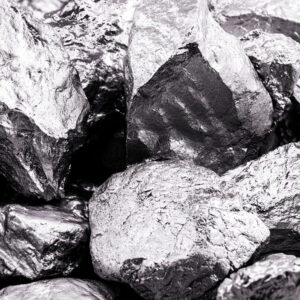Rare earth elements are used in various modern industrial applications, including electronics, clean energy, technology and the military. These elements are found worldwide, but China is the largest miner, processor and refiner of rare earth compounds and metals and the largest consumer. The rest of the world depends on the Chinese rare earths industry for this strategic material and related technologies. With geopolitical tensions rising worldwide, new approaches to raw materials security would have to be established.
Russia’s mine production and exports of rare earths were estimated at 2,700 tons of Total Rare Earth Oxides in 2021. According to the U.S. Geological Survey, these production levels have remained consistent for the last four years, and it is estimated that Russia is the third-largest holder of rare earths reserves globally.
However, the Russia-Ukraine conflict that has been raging since February is adversely affecting metals and energy supply chains and is involving an array of industries from medical equipment to automotive to aerospace and more.
In Estonia, the Silmet rare earth separation plant is run by Canada-listed Neo Performance Materials and is Europe’s main rare earth separation facility. Unfortunately, most of the rare earth feedstock it processes comes from Russia, and now with Western countries’ sanctions in place, there is a risk that Solikamsk Magnesium Works, the Russian company that supplies rare earths to the European market, may be sanctioned. As a result, the EU is actively looking to other places to source their much-needed rare earths.
China is the world’s largest producer of rare earths, with 140,000 tons in 2020 alone, accounting for almost 60 percent of global production. The problem is that with tensions between China and Taiwan rising, there is an increased risk of conflict. Essentially, China claims Taiwan, an island of 23 million people off its eastern coast, as its own territory and wants to work to bring it under one “unified” governing China. However, the United States does not formally recognize Taiwan under this Chinese policy, and it seems to be prepared to supply military support to Taiwan to defend itself. Therefore, this situation has heightened tensions between the United States and China just as the U.S. heavily depends on China to supply critical rare earths for manufacturing, technology and military purposes.
In fact, the United States relies on China for 31 of 35 strategic metals identified by the government as imperative for the U.S. manufacturing sector and national defense — eight of which are rare earths. Plus, 14 of these specific elements are not mined in the United States at all, drawing more attention to the fact that the U.S. and other countries that rely on China’s production of rare earths will need to begin looking elsewhere for compounds, metals and technologies if they are planning to be independent of China.
Meantime, Chinese companies have been blocked from funding strategic research at British universities; the United States and the European Union have been limiting Chinese investments in sensitive technologies like computer chips and telecom equipment.
Between the Russia-Ukraine and China-Taiwan conflicts, many developed countries are actively looking for alternative rare earths sourcing. In the United States and Europe, the solution that dominates today’s narrative is an increase in domestic supply. This would include digging new mines, constructing processing and manufacturing plants, and building a supply chain by making the finished products from the ground up.
However, experts are wary that these “solutions” can be achieved on time to support the green transition, citing that construction times, acquiring permits, and approvals of environmental impact assessments of rare earths mining could further delay progress. Beyond bolstering the domestic production of rare earths, the other option for increasing rare earths supply is turning to new agreements with old alliances.
Instead of scrambling to invest in new rare earths mining operations and build supply chains that could take years or even decades to be fully realized, the United States and other Western nations are developing partnerships. For instance, the U.S. Inflation Reduction Action benefits manufacturers that source materials in the United States or from nations with which the U.S. has free trade agreements, and the United Kingdom is looking to partner with countries within its commonwealth nations.
Industrialized regions are looking to speed up rare earths production and eliminate supply chain disruptions, and the solution is not as simple as increasing domestic production. Although constructing new rare earths mines is an important step, it does not address the immediate geopolitical issues affecting raw materials and technology supply chains.
Rather than focus solely on building domestic production, the major rare earths consuming nations need to look at forging collaborations with other countries and offer incentives for their manufacturers to develop agreements with highly prospective international rare earths projects to secure the necessary rare earths and build downstream supply chains. Ultimately, the need for rare earths is not going away; if anything, the demand is expected to increase, meaning it is high time for these countries to support new avenues to secure rare earths.


